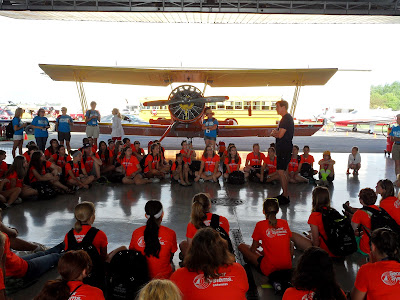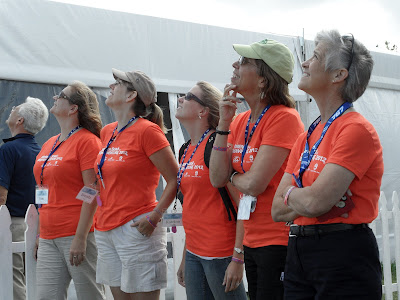Study Time!
This will be an emotional weekend for many reasons. Not only will I will miss SeaFair weekend, but this visit to Minneapolis will be the last time I go to NATCO, NWA Training Center. The simulators are moving South, and the building is going away.
Now... getting my head into A330 stuff.
In the simulator pilots get to see a radar vector with a request to intercept a radial in or out of a fix during their training/checking event---something we don't normally do on the line. But the "how to" becomes a challenge because we lose what we don't use. Not to mention course confusion can muddy the waters.
Clearance:
I think the confusion lies in the fact that we as aviators know that radials are "out" and courses "in" and in our mind we're thinking this is a radial, and we need to create the opposite of the radial to fly the course inbound. Confused yet? You shouldn't be.
Airbus made it simple. They view everything as a radial. 360 of them radiating away from or "to" any fix. All the pilot needs to know is whether they are flying to the station, or away from the station.
In this example we are flying "to" the station. We place 217 on the RADIAL IN ... into DUDIS... on 1R. But we're not done yet. We need to put it in the flight plan by selecting 1R a second time.
The second part is what everyone forgets: Pressing 1R twice. Remember, the first selection is inputting the data into the computer. The second selection is adding the data to your route of flight.
Sounds simple? It is if you don't over think it.
I will be visiting the simulator for my recurrent training starting Friday, so it's time to put the very cool airplanes on the back burner, and open the Airbus manuals.
This will be an emotional weekend for many reasons. Not only will I will miss SeaFair weekend, but this visit to Minneapolis will be the last time I go to NATCO, NWA Training Center. The simulators are moving South, and the building is going away.
Now... getting my head into A330 stuff.
In the simulator pilots get to see a radar vector with a request to intercept a radial in or out of a fix during their training/checking event---something we don't normally do on the line. But the "how to" becomes a challenge because we lose what we don't use. Not to mention course confusion can muddy the waters.
Clearance:
ATC clears you on a heading of 190 to intercept and fly inbound on the 217 degree radial to the waypoint DUDIS. How do you do this?
Step one... use the heading select knob and fly the plane on the initial heading, then program the MCDU.
The best way to eliminate confusion is to ask a “good” questions. How to start begins with the first question: What do you want to do?
Step one... use the heading select knob and fly the plane on the initial heading, then program the MCDU.
The best way to eliminate confusion is to ask a “good” questions. How to start begins with the first question: What do you want to do?
You want to go direct to a point in space that will intercept the 217 radial to DUDIS. What we really want to do is go to DUDIS, the 316 is just the path. How do you go to DUDIS?
Select the DIR key then type DUDIS into the scratch pad (or in this case it's part of your flight plan you can select it) and select 1L (One Left). If we were going direct, we would select 1L again. But our clearance was to intercept a radial to DUDIS.
Note: Radial IN and OUT are on the right side. The selections are both "radials" and not courses.
I think the confusion lies in the fact that we as aviators know that radials are "out" and courses "in" and in our mind we're thinking this is a radial, and we need to create the opposite of the radial to fly the course inbound. Confused yet? You shouldn't be.
Airbus made it simple. They view everything as a radial. 360 of them radiating away from or "to" any fix. All the pilot needs to know is whether they are flying to the station, or away from the station.
In this example we are flying "to" the station. We place 217 on the RADIAL IN ... into DUDIS... on 1R. But we're not done yet. We need to put it in the flight plan by selecting 1R a second time.
The second part is what everyone forgets: Pressing 1R twice. Remember, the first selection is inputting the data into the computer. The second selection is adding the data to your route of flight.
Sounds simple? It is if you don't over think it.
Enjoy the Journey!
XO Karlene
Flight For Safety coming soon: 78,425 words
Flight For Safety coming soon: 78,425 words

























































.jpg)
.jpg)
